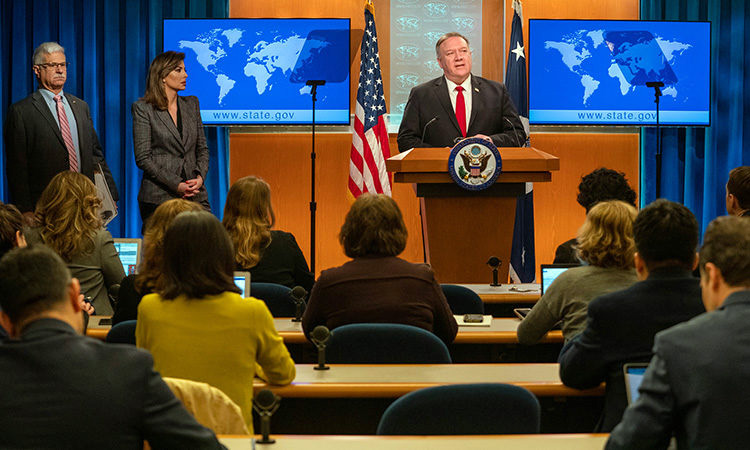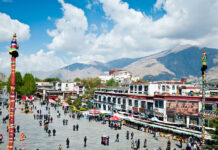
(TibetanReview.net, Mar12’20) – Releasing its Human Rights Report for 2019, the United States Department of State has said Mar 11 that China’s repression of free speech, religion, movement, association and assembly in Tibet and Xinjiang in 2019 “was more severe than in other areas of the (People’s Republic of China).”
Pointing out the colonial character of the Chinese rule in Tibet, and rejecting China’s depiction of it as autonomous, the report says: “Han Chinese CCP (Chinese Communist Party) members held the overwhelming majority of top party, government, police, and military positions in the [Tibet Autonomous Region] and other Tibetan areas.”
The report accuses China of having disrupted traditional Tibetan living patterns and customs and of having accelerated the forced assimilation of Tibetan people into Chinese society through a series of moves that included promoting an influx of non-Tibetans to traditionally Tibetan areas, expanding the domestic tourism industry, forcibly settling and urbanizing Tibetan nomads and farmers, and weakening Tibetan-language education in public schools and religious education in monasteries.
The report points out that the Chinese government’s unwillingness to issue or even renew old passports for Tibetans had created, in effect, a ban on foreign travel for the Tibetan population. It adds that Chinese residents of Tibetan areas did not face the same difficulties.
Noting that China continued to detain Tibetans arbitrarily for indefinite periods of time in 2019 without any procedural legal justice, the report especially highlights the cases of the Panchen Lama (abducted by the Chinese government along with his family in May 1995 when he was six years old); Thubpa, a monk from Ngaba County (detained in late 2017); and Lodoe Gyatso (arrested outside the Potala Palace in Lhasa in Jan 2018), none of whom have been seen since they were detained.
The report indicates that though the number of known political prisoners based on reports of the US Congressional-Executive Commission on China, had come down from 303 in the 2018 report to 273 now, the control and repression measures continued to be severe.
The report says monitoring and disruption of telephone and internet communications were particularly widespread in Tibetan areas and that the government had installed surveillance cameras in monasteries. It added that China continued to block content from any source any topics it deemed to be sensitive, including the Dalai Lama and Tibet.
The report also refers to the situation of Tibetans in Nepal, pointing out that the Himalayan state government had not issued refugee cards to Tibetan refugees since 1995. Citing the United Nations High Commissioner for Refugees, the report says around three-quarters of the approximately 12,000 resident Tibetan refugees remained undocumented, “including all of whom were younger than the age of 16 in 1995 or had been born since.”





